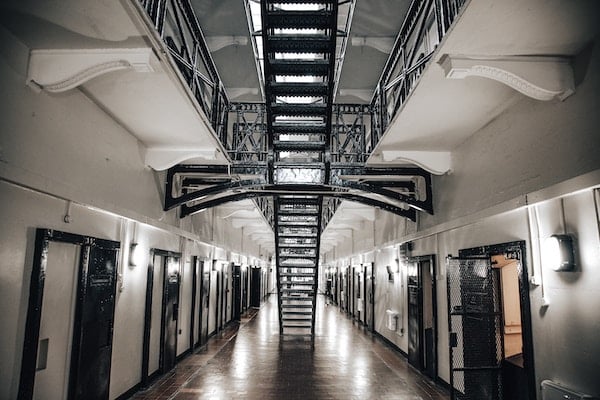Published on
College Behind Bars: The Necessity of Running A College Inside Prisons

Offering college courses inside prisons may be a foreign concept to some, but it actually has a long and complicated history. In 1994, the Violent Crime Control and Law Enforcement Act overturned a section of the Higher Education Act of 1965 and prohibited incarcerated individuals from receiving federal Pell grants. As a result, many prison higher education programs no longer had the funding to continue and were forced to shut down. In 2016, however, the U.S. Department of Education selected 67 colleges and universities to participate in the Second Chance Pell (SCP) Grant pilot program, reopening the door for higher education opportunities inside prisons (U.S. Department of Education, 2016). My school, Chemeketa Community College, was privileged to be one of the schools selected to participate. Our results have corroborated studies that show educational opportunities for incarcerated individuals reduce recidivism, resulting in an overall cost savings, stronger communities and safer prison environments. Setting up these programs, however, is not without challenges.
Some believe that those who have committed a crime don’t deserve the right to an education. From the victim’s perspective it may seem unjust that someone could commit a crime, go to prison, and come back better than they were before. However, bettering oneself is precisely the concept of corrections. The fact is that 95% of people incarcerated in state prisons are released back into their communities, and without new tools at their disposal they are likely to fall back into the activities that sent them to prison in the first place (Hughes & Wilson, 2002). According to a 2018 U.S. Department of Justice report, an estimated 68% of individuals released from prison were arrested again within the first three years.
Education has been proven effective in breaking this cycle of crime. A study funded by the U.S. Department of Justice and conducted by the RAND Corporation found that incarcerated individuals who participated in correctional education were 43% less likely to return to prison within three years than those who did not participate (Davis, Bozick, Steele, Saunders, & Miles, 2013). Our numbers for the College Inside program at Chemeketa Community College are even more striking. Since the program’s inception in 2007—we existed prior to the SCP grant—the recidivism rate for our 293 graduates is only 4.8%. Comparing this to the recidivism rate of 24.6% for the entire state of Oregon, which is already a national leader, shows how education can be an effective means in keeping individuals out of prison (Green, 2017).
The decrease in the number of reoffenders results in a large cost savings for tax payers. It costs $44,021 per year to incarcerate an individual in the state of Oregon (Vera Institute of Justice, 2015), while the maximum Pell grant award for an entire year is currently only $6,195 (Federal Student Aid, 2015). Since graduates of our program are more than five times less likely to reoffend than the average incarcerated individual in Oregon, these cost savings are being realized on a large number of individuals. To put it succinctly, it costs far less to educate someone than it does to incarcerate him or her.
The benefits of college programs inside prisons extend far beyond the immediate monetary savings. The lower recidivism results in less future victims and makes communities safer and better. Prison college education programs also result in greater safety within correctional facilities. In a 2009 report, the Correctional Association of New York interviewed staff at multiple correctional facilities and found there were lower incidents of disciplinary infractions among those who were enrolled in college classes (Correctional Association of New York, 2019). The staff also said they believed the impact extended to those who were not involved in the college programs because the existence of the programs provided an incentive for better behavior. We’ve seen a similar impact with our program as the rules for entry encourage good behavior. We require at least 18 months of clear conduct prior to entering the program and will remove anyone who receives a disciplinary report while enrolled. Very few students have been removed for disciplinary reasons and many have talked about the college opportunity as motivation to stay out of trouble.
There is also a ripple effect among the families of our students. According to a study conducted by the U.S. Education Department National Center for Education Statistics, the children of individuals who complete college are more likely to do so as well (Cataldi, Bennett, & Chen, 2018). At our graduation ceremonies, I’ve witnessed the impact the educational achievement of our students has had on their children and other family members. Many of our students have reported that their enrollment in our program inspired their family members to take college classes as well. We are exposing them to a world that many were not privileged enough to experience before.
While the reasons for offering college classes inside prisons are numerous, setting up these programs with a focus on graduation can prove to be challenging. One of the biggest challenges is scheduling. We have limited classroom availability and almost all of our students work jobs within the prison system during the day. This means that classes must typically be held at night or on the weekends, planning around the Department of Corrections’ (DOC) count and meal times.
Scheduling is not limited to when and where to hold classes, it also involves determining which classes to hold so that everyone is on track to graduate. We try to use a cohort model to bring students along in the curriculum at the same pace, but plans are often disrupted by a variety of circumstances, like changing release dates, losing students, or enrolling students with different educational backgrounds. We are always evaluating numbers to make sure we have enough students to cost-effectively offer a class, but without exceeding our classroom space. Even when a schedule seems set, the unexpected may happen. We once had to delay the start of a term for two weeks due to riots in the general population, resulting in an institutional lockdown and the suspension of all outside programs.
Replicating a college curriculum with limited resources and security requirements is also challenging. We worked with the DOC security manager and our Dean of Math and Science, for example, to determine which science labs we could hold inside the prisons. A limitation in the types of materials we can bring in made certain classes, like chemistry, impossible to recreate. Due to our instructors’ strong commitment to security polices and the cooperation of DOC, however, we gained approval to have full scale labs in biology, geology and physics.
With no online access available to our students, many normal college activities become more complicated. To allow our students to do their own research, for instance, we purchased a large offline research database and set it up on a network of computers connected to a server. We then staff certain times that students can come to the computer lab to conduct research and type papers. Without online access, even simple things, like communicating their end of the term grades or where they are in the financial aid process, can be time-consuming.
It’s also a challenge to provide students in prison the same resources that students receive on the main campus. We carry boxes of books from facility to facility and set up study sessions with volunteer incarcerated tutors. We received DOC approval to develop a student store where students can purchase or rent necessary school supplies like calculators, graph paper and rulers. I often wear many hats to provide services that are typically performed by entire departments on the main campus. From academic advising, to ordering transcripts, to navigating the financial aid process, the services that are needed are seemingly endless.
While the challenges are numerous, we’ve been able to overcome them and graduate the majority of our students. Of the students who received SCP grants during the 2016-17 year, 65.2% of them graduated within 150% of normal program time. This far exceeds the national average for all students (not just incarcerated ones) of 25% for first-time, full-time undergraduate students at public two-year institutions (National Center for Education Statistics, 2019). Our students also perform remarkably well, with the last graduating class finishing with an average GPA of a 3.50. We wouldn’t be able to achieve these numbers without resilient instructors and staff, committed students, and extraordinary relationships with incredibly supportive people at the DOC.
Creating a college inside prisons is tough, but the positives far exceed the negatives. The resulting reduction in recidivism, corresponding cost savings, better communities, and safer correctional facilities makes it all worth it. The funding of such programs may have a long and tumultuous history, but the results of programs like the one we have at Chemeketa Community College are proving why the financial commitment is so necessary. The question is not how can we afford to fund such programs, it is how can we afford not to?
– – – –
References
Cataldi, E., Bennett, C., & Chen, X. (2018, February). First-Generation Students College Access, Persistence, and Postbachelor’s Outcomes. U.S. Department of Education, 4. Retrieved from https://nces.ed.gov/pubs2018/2018421.pdf
Correctional Association of New York. (2019, January). Education from the Inside, Out: The Multiple Benefits of College Programs in Prison, 8-9. Retrieved from https://perma.cc/678G-979E
Davis, L., Bozick, R., Steele, J., Saunders, J., & Miles, J. (2013). Evaluating the Effectiveness of Correctional Education: A Meta-Analysis of Programs That Provide Education to Incarcerated Adults. Rand Corporation. Retrieved from https://www.rand.org/pubs/research_reports/RR266.html.
Federal Student Aid. Federal Pell Grants. (2019, July 1). Retrieved from https://studentaid.ed.gov/sa/types/grants-scholarships/pell.
Green, E. (2017, January 5). Oregon’s recidivism rate lowest in nation? Not so fast. Street Roots News. Retrieved from https://news.streetroots.org/2017/01/05/oregons-recidivism-rate-lowest-nation-not-so-fast.
Hughes, T., & Wilson, D. Reentry Trends in the United States. (2002). U.S. Department of Justice, Bureau of Justice Statistics. Retrieved from bjs.ojp.usdoj.gov/content/pub/pdf/reentry.pdf
National Center for Education Statistics. (2019, May). Undergraduate Retention and Graduation Rates. Retrieved from https://nces.ed.gov/programs/coe/indicator_ctr.asp.
U.S. Department of Education. (2016, June 24). 12,000 Incarcerated Students to Enroll in Postsecondary Educational and Training Programs Through Education Department’s New Second Chance Pell Pilot Program. Retrieved from https://www.ed.gov/news/press-releases/12000-incarcerated-students-enroll-postsecondary-educational-and-training-programs-through-education-departments-new-second-chance-pell-pilot-program
Vera Institute of Justice. (2015). Prison Spending in 2015. Retrieved from https://www.vera.org/publications/price-of-prisons-2015-state-spending-trends/price-of-prisons-2015-state-spending-trends/price-of-prisons-2015-state-spending-trends-prison-spending
Author Perspective: Administrator



